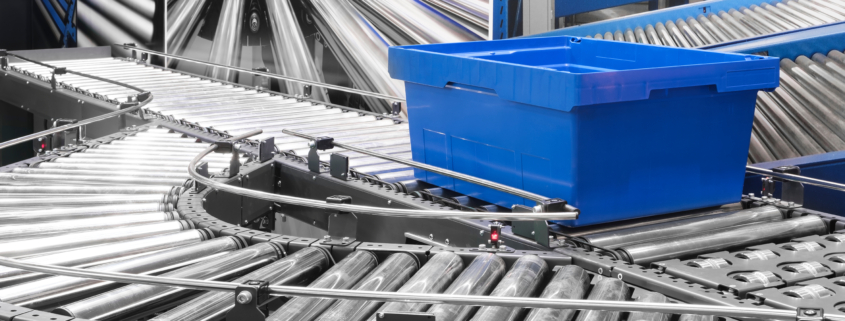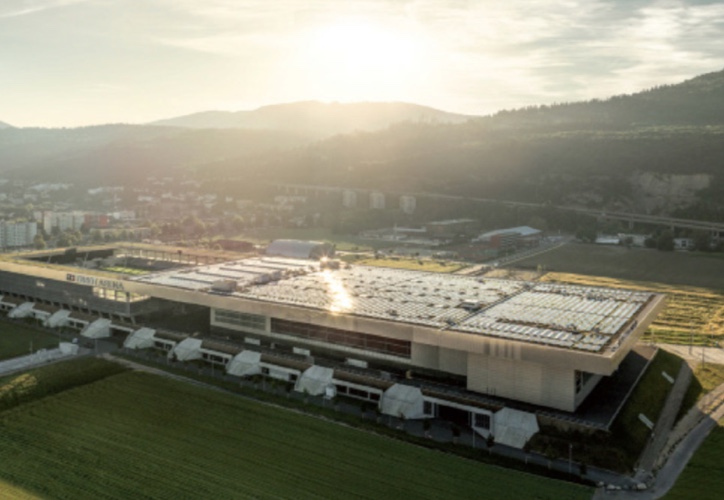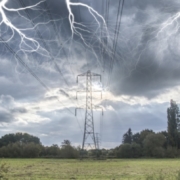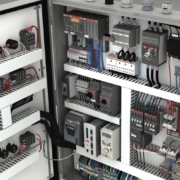The key to reducing energy use in conveyors
Energy costs are becoming an increasingly important consideration for facility managers when selecting motors and related control components for their conveyor systems. OEMs are taking notice and designing in the capability to monitor and manage power.
Conveyors are used in almost every manufacturing and production facility. Electric motors provide the propulsion for those conveyors, accounting for a significant part of a facility’s energy usage and operating costs. It is estimated that electric motor systems account for 70% of the power consumed by industry.[1]
Nearly every organization is intensely interested in controlling energy costs. Along with labor and materials, energy is a major operating cost, up to 40% in some industries. OEMs are helping integrators and end users reduce the energy consumed by conveyors by specifying/selecting today’s higher-efficiency motors and transmission components. But there’s another approach to delivering impressive energy reductions in conveyor systems.
One of the most effective strategies to reduce energy usage is strategic scheduling of operations, an ability enabled by energy monitoring and management technology. This approach puts the power to control energy costs firmly in the hands of facility and operation managers.
As utilities across the country strive to both meet the demands of their customers and effectively manage power generation, they’ve implemented many carrot-and-stick schemes. The carrots include lower rates for customers that consume power at predictable levels and low-power-demand times. The sticks include penalties assessed to customers that consume high levels of power during peak demand times, penalties that can be costly.
Reduce energy costs
The idea that “you can’t improve what you can’t measure” is fundamental to every process-improvement effort and is particularly relevant to energy usage. For end users to develop and implement effective energy-management strategies, they first need to be able to measure key energy parameters like voltage and amperage.
Energy measurement capabilities are often built in, or available as an add-on, in the current generation of motors and related control devices. Then not only can you measure voltage, amperage, and other parameters, but you can also store and transmit this data via a variety of communication protocols to the end user’s local network and/or to the cloud.
The data can be manually reviewed to assess power usage, but applications are available to provide analytics and dashboards that greatly enhance a facility manager’s ability to assess their energy consumption landscape across hundreds or thousands of motors and connected devices.
With those insights, end users have the information they need to schedule their energy usage most effectively, taking advantage of lower, off-peak times and avoiding costly overage charges. This information can also be valuable when making CapEx decisions.
A reliability and sustainability bonus
The ability to monitor and analyze real-time power data also enables companies to detect potential faults. Significant changes in voltage or amperage typically indicate an issue with the motor or attached conveyors. Motors and connected control devices are able to measure key asset KPIs and can be programmed to automatically send an alert to the maintenance team that a conveyor requires attention.
Those alerts can reduce unplanned downtime and keep end-user processes up and running. They also enhance safety by preventing catastrophic failures and reducing the time maintenance crews need to spend near the equipment.
For most companies, the overarching goal of energy measurement and management is to reduce energy costs and improve efficiency. But a side benefit is that reduced energy use also shrinks their carbon footprint.
Monitor and control from anywhere
Energy monitoring and management capabilities can easily be distributed throughout a facility, but this technology also has a cloud connection that makes it possible for end users to access their dashboards from anywhere. That information can also be made available to OEMs that provided the equipment, enabling them to remotely troubleshoot equipment issues at their customers’ facilities.
An opportunity to reduce energy usage
No one can afford to ignore the cost of energy required to power their production and process equipment. Faced with rising energy costs, the need to keep operating costs low, and pressure to reduce carbon footprints, facility managers are seeking ways to reduce their energy usage. That includes putting pressure on their OEMs for products that consume less energy and/or enable energy-reduction efforts that allow facility managers to control their energy destiny.
Every point where a motor or related component – Direct online (DOL) starter, softstarter, VFD motor control, breaker, contactor, etc. – is used in powering a conveyor is an opportunity to reduce energy use. The technology available today is helping facilities achieve significant savings on energy bills and maintenance costs. Facility managers and the OEMs they rely on for production equipment are putting energy efficiency higher on their requirements when designing and selecting these assets.
—
John McHale
ABB Ability™ – Smart Power
Diana Nuccitelli
Market Development Manager
Joe Flaviani
Market Development Manager
Rosa Lopez
Market Development Manager











